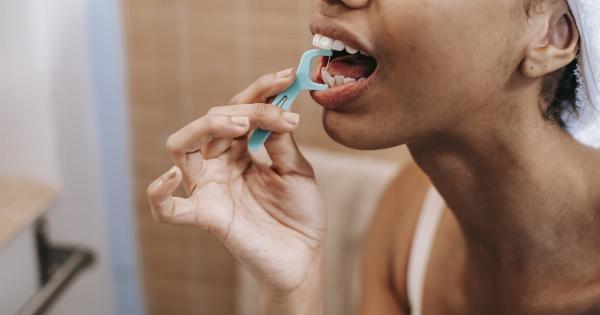Stroke is a serious medical condition that can have long-lasting effects on an individual’s health and well-being. It is caused by a disruption in the blood supply to the brain, and can result in permanent brain damage or even death.
While some risk factors for stroke, such as age and family history, cannot be controlled, there are many lifestyle habits that can be adopted to reduce the risk of stroke. Here are 30 habits to keep your brain safe from stroke:.
1. Quit smoking
Smoking increases the risk of stroke by damaging blood vessels and reducing the amount of oxygen that reaches the brain. Quitting smoking is one of the most important steps you can take to reduce your risk of stroke.
2. Exercise regularly
Regular exercise helps to keep the heart and blood vessels healthy, reducing the risk of stroke. It is recommended to get at least 30 minutes of moderate exercise per day, such as brisk walking, cycling, or swimming.
3. Maintain a healthy weight
Being overweight or obese increases the risk of stroke, as it puts extra strain on the heart and blood vessels. Maintaining a healthy weight through a balanced diet and regular exercise can help to reduce this risk.
4. Eat a healthy diet
A diet that is high in fruits, vegetables, whole grains, lean protein, and healthy fats can help to reduce the risk of stroke. It is important to limit the intake of processed foods, sugary drinks, and foods that are high in saturated and trans fats.
5. Limit alcohol consumption
Drinking too much alcohol can increase blood pressure and the risk of stroke. It is recommended to limit alcohol consumption to no more than one drink per day for women and two drinks per day for men.
6. Manage stress
Chronic stress can contribute to high blood pressure and other risk factors for stroke. Finding healthy ways to manage stress, such as practicing mindfulness or yoga, can help to reduce this risk.
7. Get enough sleep
Getting enough sleep is important for overall health and can help to reduce the risk of stroke. It is recommended to aim for 7-8 hours of sleep per night.
8. Control high blood pressure
High blood pressure is a major risk factor for stroke, as it can damage blood vessels and increase the risk of blood clots. Regular blood pressure checks and medication can help to control this risk factor.
9. Manage diabetes
Diabetes increases the risk of stroke by damaging blood vessels and causing inflammation. It is important to manage diabetes through medication, healthy eating, and regular exercise.
10. Control high cholesterol
High cholesterol levels can lead to the buildup of plaque in the blood vessels, increasing the risk of stroke. A healthy diet and medication can help to control high cholesterol and reduce this risk factor.
11. Drink plenty of water
Drinking plenty of water can help to keep the blood vessels healthy and reduce the risk of stroke. It is recommended to drink at least 8 glasses of water per day.
12. Avoid sitting for long periods of time
Sitting for long periods of time can contribute to a sedentary lifestyle and increase the risk of stroke. It is recommended to take frequent breaks to walk around and stretch.
13. Wear sunscreen
Sunscreen can help to protect the skin from damage and reduce the risk of skin cancer, which has been associated with an increased risk of stroke.
14. Limit exposure to air pollution
Air pollution has been associated with an increased risk of stroke. It is important to limit exposure to air pollution by staying indoors on high pollution days and using air filters in the home.
15. Wear a helmet
Wearing a helmet while cycling, skateboarding, or participating in other activities can help to reduce the risk of head injury, which can lead to stroke.
16. Be aware of stroke symptoms
Being aware of the symptoms of stroke, such as sudden weakness, vision changes, and slurred speech, can help to ensure prompt medical treatment and reduce the risk of long-term complications.
17. Know your family history
Knowing your family history of stroke and other medical conditions can help you to understand your own risk factors and take steps to reduce the risk of stroke.
18. Follow medication instructions
Following medication instructions can help to control chronic conditions, such as high blood pressure and diabetes, which increase the risk of stroke.
19. Stay hydrated during exercise
Staying hydrated during exercise can help to prevent dehydration, which can increase the risk of stroke. It is recommended to drink water before, during, and after exercise.
20. Reduce sodium intake
Reducing sodium intake can help to lower blood pressure and reduce the risk of stroke. It is important to read food labels and choose low-sodium options where possible.
21. Incorporate strength training into exercise routine
Incorporating strength training into an exercise routine can help to build muscle mass and reduce the risk of stroke.
22. Practice good oral hygiene
Poor oral hygiene has been associated with an increased risk of stroke. Brushing and flossing regularly, and visiting the dentist for regular checkups, can help to reduce this risk factor.
23. Manage atrial fibrillation
Atrial fibrillation, a type of irregular heartbeat, can increase the risk of stroke. Medication and monitoring can help to manage this condition and reduce the risk of stroke.
24. Avoid illegal drugs
Illegal drugs, such as cocaine and amphetamines, can increase the risk of stroke. Avoiding these substances can help to reduce this risk factor.
25. Manage depression
Depression has been associated with an increased risk of stroke. It is important to seek treatment for depression and manage this condition to reduce the risk of stroke.
26. Avoid secondhand smoke
Exposure to secondhand smoke can increase the risk of stroke. It is important to avoid environments where smoking is permitted.
27. Limit caffeine intake
Excessive caffeine intake can increase blood pressure and the risk of stroke. It is recommended to limit caffeine intake to no more than 400mg per day.
28. Get regular checkups
Regular medical checkups can help to identify and manage risk factors for stroke, such as high blood pressure and diabetes.
29. Use caution when taking prescription medications
Some prescription medications can increase the risk of stroke. It is important to use caution and follow instructions when taking medication.
30. Stay informed and educated
Staying informed and educated about stroke and its risk factors can help to reduce the risk of stroke and ensure prompt medical treatment if necessary.






























